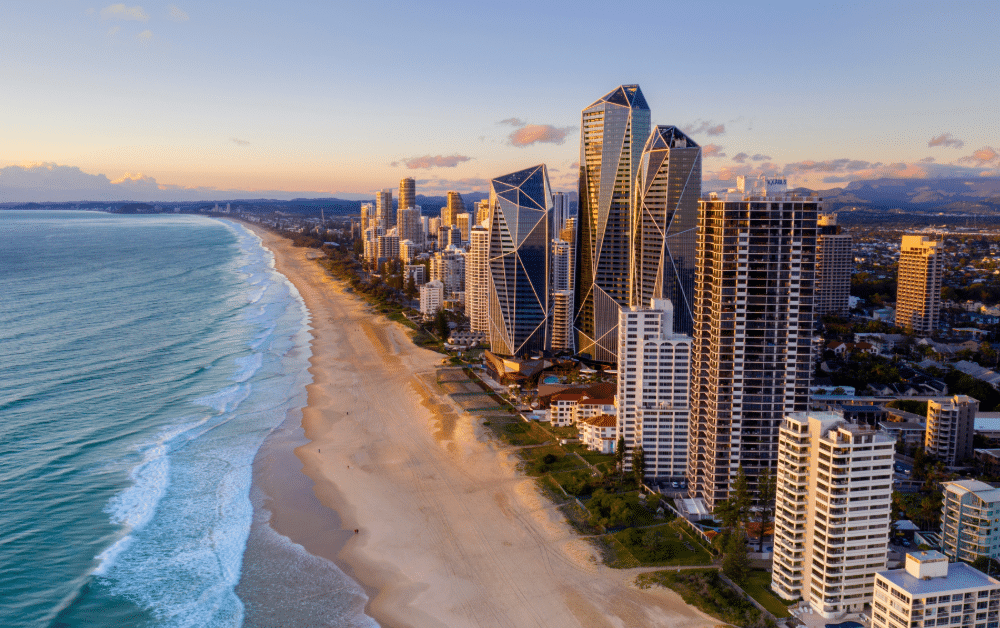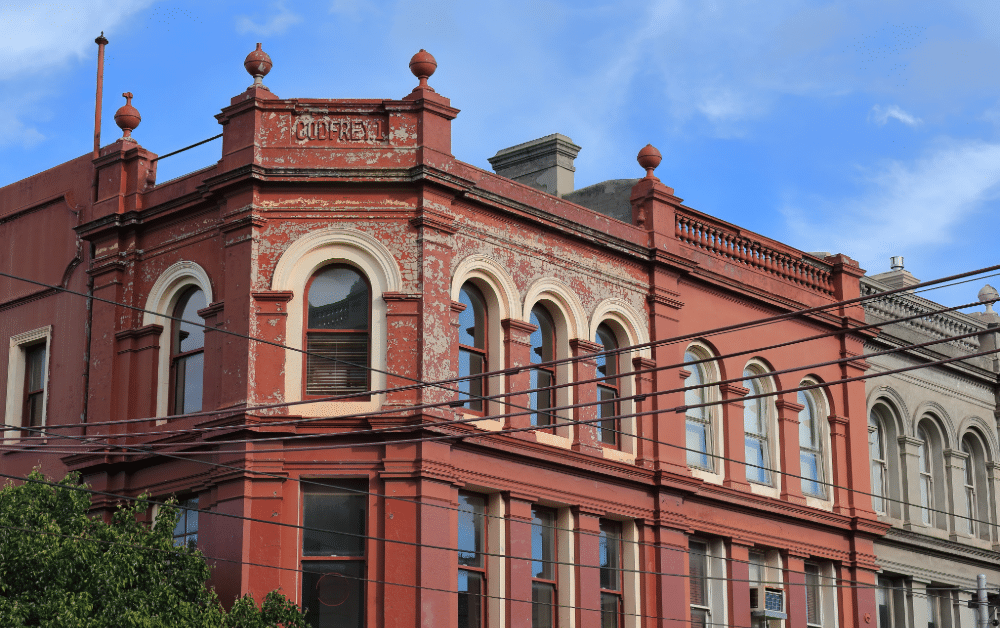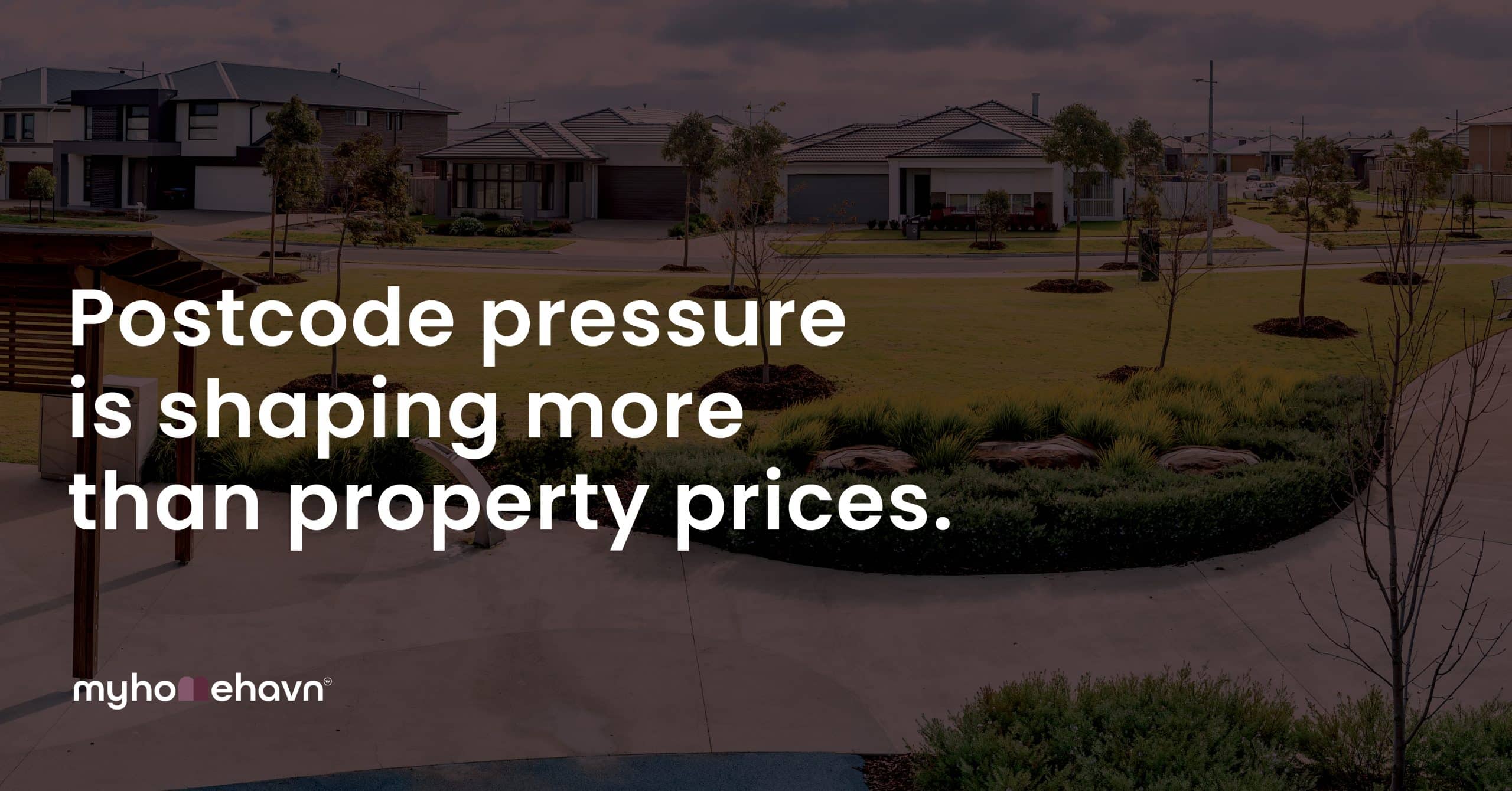Buying, selling, and renovating have become something of a national pastime in Australia — and with it, one popular topic of debate: do postcodes affect property value?
The short answer? Yes. But perhaps not in the way you think.
While market data and real estate agents might have their take, there’s another kind of postcode pressure quietly influencing renovation decisions in 2025. One that’s less about square metre prices, and more about social cues, suburb optics, and the slow drip of comparison culture.
You see it play out over morning coffees and Pilates chats. The conversation starts with schools or new cafés, then gently shifts (as it so often does) to renovations. Someone’s upgrading their kitchen. Someone else has just added a second storey. You casually mention your plans for a fixer-upper and feel it… The subtle flicker of curiosity. Will it match the high-spec house next door? Or will you do something different?
This isn’t overt suburb snobbery or open competition. It’s far more subtle. It lives quietly in social media scrolls, in late-night real estate browsing, in those coffee catch-ups sprinkled with casual references to the latest combi oven or artisan-crafted splashback.
But beneath the quiet admiration lies an unspoken tension: a tug-of-war between renovating for personal authenticity or postcode prestige.
In suburbs known for their coffee culture and boutique terraces, it’s easy to slip into the rhythm of postcode pride. That soft-but-steady pressure to keep up (or even outdo the neighbours) has quietly started to shape renovation decisions.
Which raises a deeper question: are these upgrades aligned with how we actually live, or are they simply keeping up appearances for suburb optics?

Status suburbs and their silent design rules
Our choice of postcode is increasingly shaping our identity. Demographer Bernard Salt calls it “aspirational migration,” the move to suburbs imbued with status symbols, cultural cachet, or aesthetic appeal.
Living in Australia’s inner metro pockets — whether Sydney’s Inner West or Melbourne’s Inner North — often means navigating the unspoken competition of property prestige. According to CoreLogic’s latest report (2024), certain inner-metro suburbs have seen median house prices soar by 20–30% in just twelve months, fuelling an environment where property talk and renovation comparisons become commonplace.
Suburbs like Byron Bay, Brunswick and Balmain carry implicit aesthetic expectations. Brunswick evokes designer minimalism with heritage nods. Balmain whispers quiet luxury through timeless sandstone facades. Byron Bay suggests a relaxed, bohemian-chic sensibility. Choosing to live in these places often means, consciously or not, homeowners feel compelled to uphold the local design standards.
Domain’s Chief of Research, Dr Nicola Powell, explains: “In high-demand suburbs, there’s an undercurrent of property envy that can subtly influence homeowners. It’s human nature to measure our success against peers, but it becomes problematic when it overtakes genuine lifestyle needs.”
With real estate now a common fixture in social conversations, it’s no surprise that many homeowners feel the invisible pull to renovate — not just for personal comfort, but for public admiration too.

The subtle way postcodes affect property value
Renovation decisions can quietly broadcast a sense of social belonging. It’s rarely about outright wealth. More often, it’s about the subtle signals of shared taste. Whether it’s the choice of tumbled limestone pavers, the must-have butler’s pantry instead of open shelving, or the perfect shade of muted sage cabinetry, these details say a lot about who we are — or who we want to be seen as.
This quiet tension between personal comfort and projected identity often plays out in material selections, room layouts and finishing touches. It’s the subtle way that postcodes affect property value, and why some pockets consistently dominate the market — not just for what they offer, but for what they represent.
As interior designer Chelsea Hing shared in a 2021 interview with Australian Design Review, “We design for how people want to be seen as much as how they want to live.” Her philosophy captures the layered nature of home design, where spaces reflect both internal needs and external aspirations. For many homeowners, it’s a balance they’re constantly negotiating within suburb-driven expectations.

The tension between optics vs. reality
The issue isn’t about rejecting beautiful, thoughtfully designed homes. It’s about becoming aware of what’s driving your decisions, and reclaiming your intention. When renovations start aligning more with suburb expectations than with how you actually live, there’s a risk you’ll end up with a space that doesn’t truly support your lifestyle.
Take a moment to reflect. Is your design based on what works for you, or what you think your postcode expects?
Practical reflection can ease this tension. Think about your daily habits. Does your lifestyle suit the minimalist kitchen you keep seeing online, or do you actually need more warmth and functionality than visual perfection? What about your future needs? Will open-plan living still work for your family in a few years, or is it something you feel expected to choose? Emotional needs count, too. Does your home make you feel grounded and comfortable, or is it starting to look more like someone else’s Pinterest board?
A useful question to ask is: would I still want this design if I lived in a different suburb? If not, the decision might be more about appearances than personal need. There’s no shame in wanting beauty, but it should support the way you live first.
Look to your neighbours for inspiration, and seek advice when needed, but make sure your choices come back to what matters most to you. Prioritising comfort, function and personal style doesn’t mean compromising on impact. It means creating a home that feels right — and adds lasting, meaningful value.
To help, try this simple exercise. Create a “needs versus norms” list. On one side, write down what your home truly needs (like more storage, a quiet nook, or flexible workspaces). On the other side, list the features you’re drawn to. This side-by-side comparison can bring clarity and help you see what’s genuinely important.
Renovate like no one is watching
It may be inevitable that postcodes affect property value in the real estate market, but you can reclaim your renovation from postcode pressure in the social sense. This isn’t about making a bold statement. It’s a quiet act of authenticity. By choosing with intention, instead of defaulting to suburb conventions, you’re creating a home that feels more meaningful — and unmistakably yours.
It might feel a little radical to prioritise personal comfort over collective suburb identity. But there’s power in making decisions consciously, choosing design that fits your lifestyle rather than just your address.
If you’ve started noticing how suburb expectations are influencing your renovation plans, you’re not alone. Sometimes all it takes is a gentle nudge or a fresh perspective to bring things into focus. Myhomehavn supports homeowners who want to design with integrity, connecting you with professionals who listen first, and build around what truly matters to you.
Because at the end of the day, a home that feels right will always matter more than one that simply looks the part.



